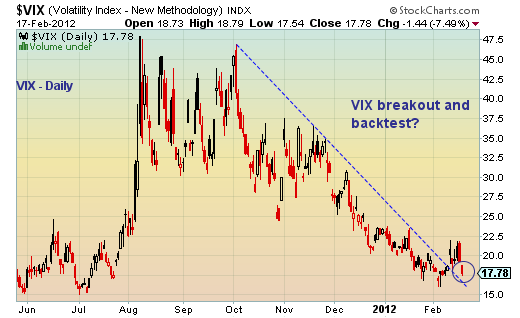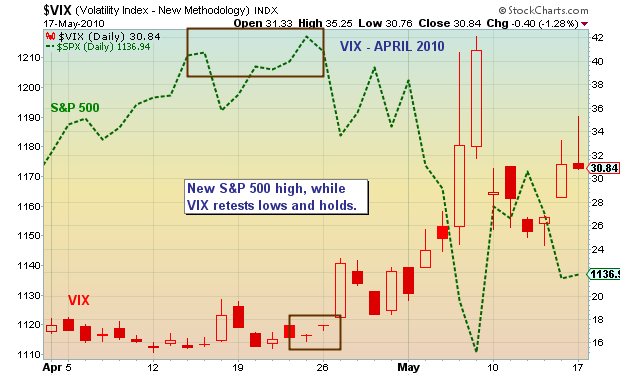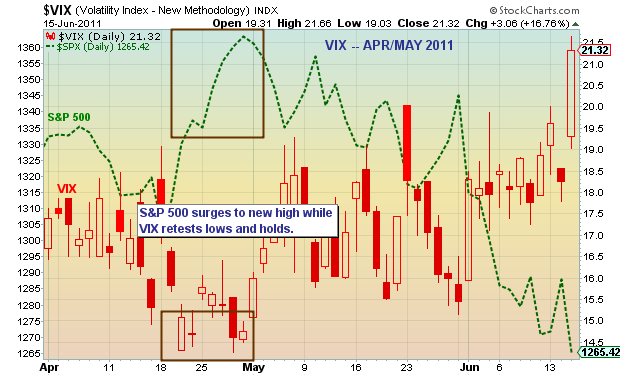 By Andrew Nyquist
By Andrew Nyquist
On February 3rd, the VIX (Volatility Index) swooned to 16.10 while the S&P 500 hit new near term highs around 1345. Things began to “feel” easy, and maybe a little too easy. Volatility expanded and the market traded up and down in a relatively tight range (1335-1355) over the next 8 trading days. Despite the back and forth, this was ultimately seen as bullish by many investors and analysts, as the S&P 500 was able to hold its uptrend line before pushing to new near term highs on Thursday and Friday. Definitely hard to argue with the bulls logic here. But, is it really just that easy… simply up, up and away from here?
No, it’s never that easy, and if your a good investor, you should be doing your due diligence on the risk side to protect gains or at a minimum, begin to prepare for the possibility of a pullback. It was during my digging session for market clues last night that I noticed a prospective VIX divergence setup that may bring about a short to intermediate term market top. You see, the VIX broke out of its downtrend and the lows from February 3rd have yet to be taken out even though the S&P 500 has run higher. And, if the VIX can retest and hold at or above its recent lows while the S&P 500 is hitting new highs, then we may have a divergence. It happened in April of 2010 and again in April-May 2011… and it may be occurring now (see charts below).
Again, I get the bullish case and am not here to squash it. The market has found new energy and feels like it wants to go higher. But, the bullish stance is purely intuitive… if prices hold up in the face of increased fear and volatility, then that must be a good sign, right? Well not necessarily, and not always. You see, it can be an exhaustive pattern as well. Especially when it occurs from a lower base of volatility. And this may relate back to investor psychology as well. As volatility expands, so do our emotions. Bulls and bears get chippy over their positions (no pun intended) and the market becomes a tug of war. It is during this time that funds and fund managers get nervous over their desire not to miss out on profits while understanding that they need to protect them. This leads to a quick bout of volatility (which we already saw), that is followed by a quick denial phase where it appears that the trend party (i.e. the bulls) has won and the trend resumes.
Not a bad explanation, eh? Okay stop booing, just focus on the pattern and prospective divergence. Keep an eye on the Feb 3 VIX lows, and keep researching, digging, and sharing. Readers Note: the VIX is also known as the “fear index” and often moves opposite market direction.
———————————————————
Your comments and emails are welcome. Readers can contact me directly at andrew@seeitmarket.com or follow us on Twitter on @andrewnyquist or @seeitmarket. For current news and updates, be sure to “Like” See It Market on Facebook. Thank you.
Positions in SH at time of publication.
Any opinions expressed herein are solely those of the author, and do not in any way represent the views or opinions of his employer or any other person or entity.









